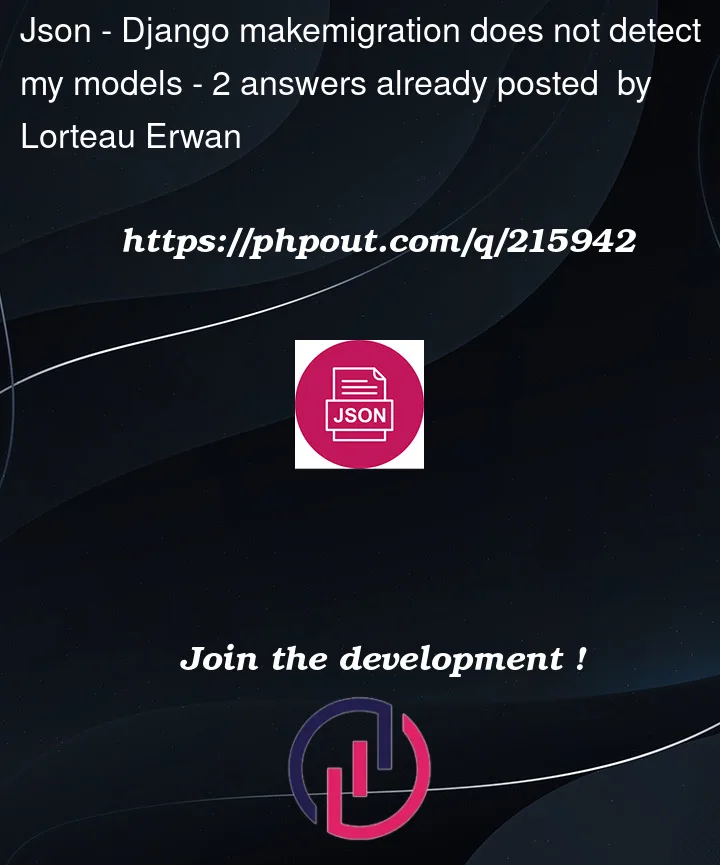I have the following structure :
DjangoProjectRoot
API
Peak
peak_model.py
Waterfall
waterfall_model.py
models.py
...
As you can sea I organized the code to have separate module for each models, containing the model itself as well as the associated serializer and view.
When I delete my database schema, all the migrations "makemigrations", the others tables are created, except the waterfall one.
api/migrations/0001_initial.py
- Create model Book
- Create model Department
- Create model Natural
- Create model Publisher
- Create model Region
- Create model Cave
- Create model Glacier
- Create model Lake
- Create model Peak
- Create model Saddle
- Create model Shelter
- Create model Municipality
- Create model Guide
- Add field region to department
- Create model Collection
- Create model Author
Any idea why ?
I just refactored my code, before everything was in the model field. I’m also a bit surpised by " – Add field region to department ". My database is empty and I cleaned the migrations. Maybe I should add something in the init.py file ? Seems like django needs to detect my new structure ?
waterfall_model.py :
from django.db import models
from api.natural.natural_model import Natural
class Waterfall(Natural):
height = models.IntegerField()




2
Answers
you should register your apps in
settings.pyalso don’t forget to rename
peak_model.pyandwaterfall_model.pyintomodes.pyor organize they inmodelsmodule.When making migrations, Django goes through all the apps listed in the
INSTALLED_APPS, looks at existing migrations to build the migration state, and then compares that to the current status of the models that are available in apps’modelsmodule.In order to have them recognized, you’ll either need to have them all in
models.py, or, if you’re going with a package (models/dir with multiple files), you’ll need to import them all in themodels/__init__.pyfile.When there is already a
migrations/package present in app’s dir,makemigrationswill just pick the models up and generate the new migrations. However, if you do not have amigrationspackage, Django will not pick it up automatically, and you will have to explicitly specify the apps’ names.e.g. If you have an
API.Peakapp installed, but you do not have aAPI/Peak/migrations/folder present, you will have to explicitly provide it, i.e.python manage.py makemigrations Peak(Note that when apps have dots in them, you only need to specify the last part, soAPI.PeakandAPI.Waterfallwould be designated just withPeak, orWaterfall)tl;dr As Maxim Danilov instructed, you’ll need to add those apps into the
INSTALLED_APPS, make sure you have an importablemodelsmodule that contains those modules, and then runmakemigrationscommand again (explicitly specifying app name might be required).